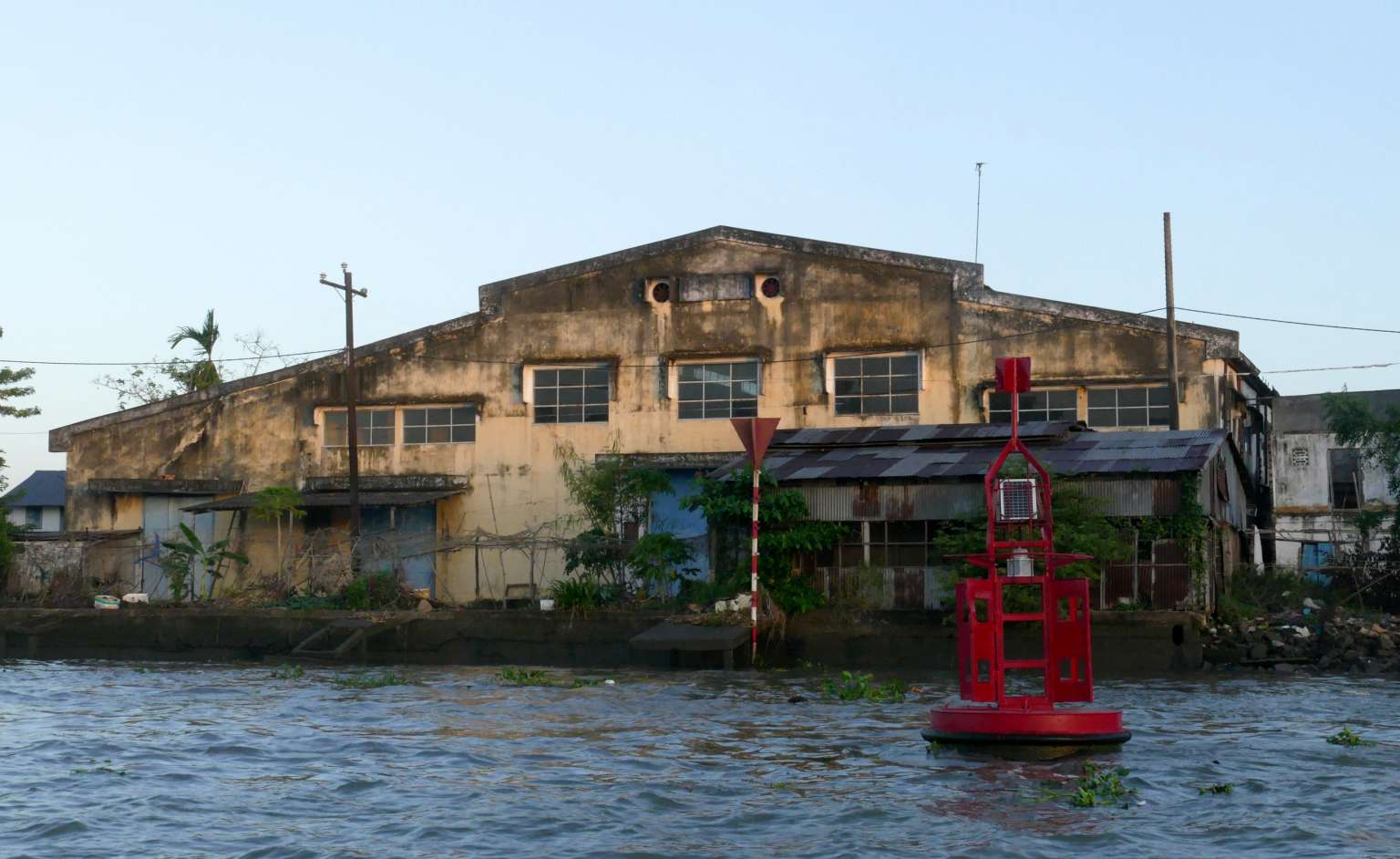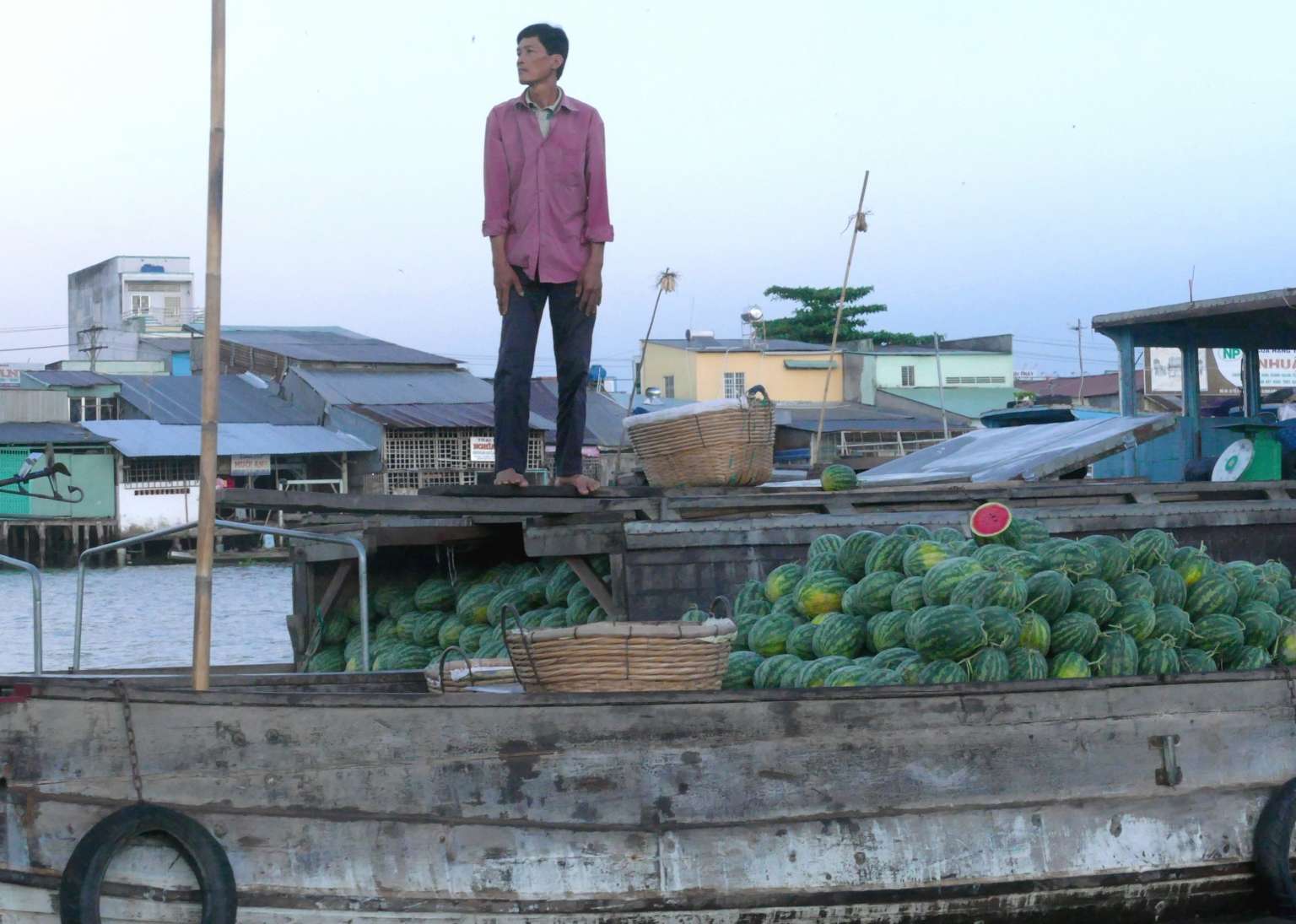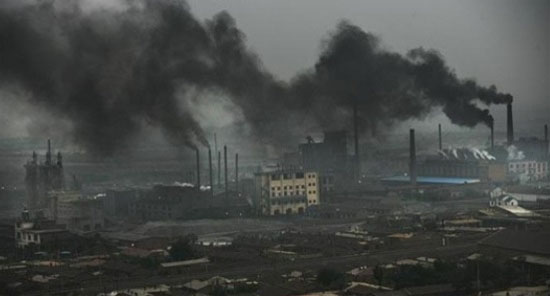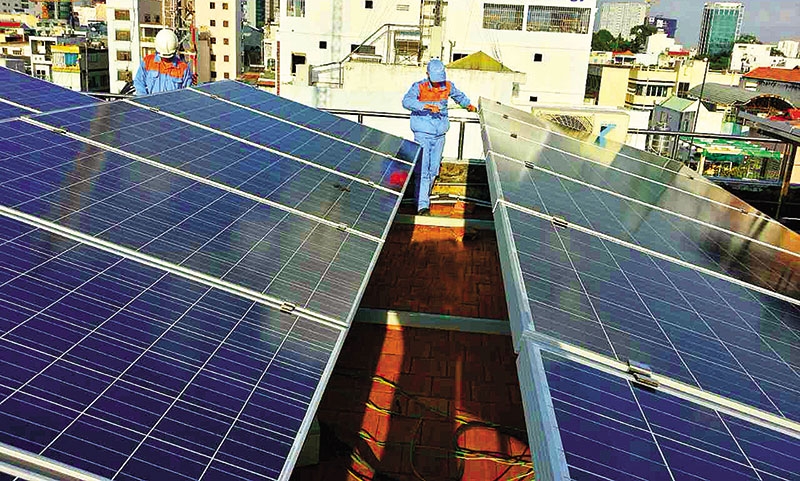
In the shifting sands and waters that is the Mekong Delta, years of developmental mistakes, climate change as well as new dams being built upstream are coalescing to drown the vast region.
Dressed in red, Madam Dam Thi Quyen, a 57-year-old mother of three grown-up children, sits by her shack on the road south of Can Tho city among the green rice paddies, shrimp farms and deep rivers of Vietnam's Mekong Delta.
She has a problem, she says - her 1.5ha of rice fields are on the "wrong side of the dyke".
"I have to pay money to hire someone to pump fresh water into the fields; 100,000 dong (S$6) a day. Of course, life is hard," she says as she skilfully hacks open green coconuts, pouring their water over ice packed into beer mugs.
"It's good for him, though, he is on the right side of the dyke," she says, pointing at her friend. Fisherman Tran Van Luu grins sheepishly and nods. Mr Tran, 51, is on the other side of the road; he may have more time before the salinity becomes severe on his land.
The old flood dyke runs below what is now the road in front of Madam Quyen's shack, where hammocks hang in the shade to be rented to tired travellers for an hour or two, as they sip fresh coconut water.
Embankments or dykes have been around for generations in the delta as people who settled there sought to control periodic floods from the massive, 4,350km-long Mekong river system that originates on the Tibetan plateau in China and runs through Yunnan and the Myanmar border to Laos and Thailand, then down to Cambodia and, finally, splitting into two huge streams and a myriad smaller ones, into southern Vietnam. On one of the big streams, the Hau river, sits Vietnam's fourth-largest city, Can Tho.

Sinking land, broken houses, (above) on the banks of the Hau river in Can Tho. Besides the usual problems of land subsidence, the people of this Vietnamese city in the Mekong Delta face new threats from climate change and, soon, dams. ST PHOTO: NIRMAL GHOSH
Embankments or dykes have been around for generations in the delta as people who settled there sought to control periodic floods from the massive, 4,350km-long Mekong river system that originates on the Tibetan plateau in China and runs through Yunnan and the Myanmar border to Laos and Thailand, then down to Cambodia and, finally, splitting into two huge streams and a myriad smaller ones, into southern Vietnam. On one of the big streams, the Hau river, sits Vietnam's fourth-largest city, Can Tho.

Sinking land, broken houses, (above) on the banks of the Hau river in Can Tho. Besides the usual problems of land subsidence, the people of this Vietnamese city in the Mekong Delta face new threats from climate change and, soon, dams. ST PHOTO: NIRMAL GHOSH
The sea is 10km away from where Madam Quyen sits, but with the delta sinking and the sea level rising, and as her home is on the seaward side of the road, she experiences more salinity.
Salinity - the level of which varies from season to season - is a constant factor in the delta, where the average elevation is just 1.5m above sea level, and the land is sinking by between 1cm and 4cm every year.
The salination comes from sea water incursion at high tide, exacerbated by land subsidence and a steady rise in sea level due to global warming. Salinity also varies depending on how much fresh surface water comes from the rivers.
Soon, though, most of the rivers will not flow freely. This dynamic landscape drained by broad shifting rivers and deep streams is now in the gyre of a perfect storm of years of developmental mistakes, the unpredictable consequences of climate change and, according to studies, probably significant effects of a series of dams being built upstream, mostly in Laos.
The sprawling delta roughly the size of Switzerland is at the receiving end of whatever happens upstream.
Can Tho, with a population of 1.2 million, is at the epicentre of the delta, 70km from the South China Sea to the east and 50km from the Gulf of Thailand in the west.
The delta is a cornucopia, contributing 20 per cent of Vietnam's gross domestic product. It provides 50 per cent of Vietnam's food, and 65 per cent of its fruit.
The main market in Can Tho, on land and floating on the adjacent Hau river, is crammed with vegetables, fruit and fish. Further south, crates of silvery marine fish come ashore at the Trande Fishing Port, to be drenched in ice and loaded into refrigerator trucks.
With such a large role in Vietnam's economy, the stakes are high in the delta. But experts are increasingly worried about its future. One challenge is to reinforce Can Tho, which has been suffering from increasingly severe floods. Along the river's edge some homes have been abandoned. A few sag brokenly into the river.
Some of the flooding is due to the natural effect of the powerful rivers which erode their banks. But some is also due to the subsidence that is caused by the extraction of underground water for the population of the city; and by hard concrete structures interfering with natural drainage.
Now climate change is an additional worry as it spawns sea-level rise and uncertain and sporadic weather - typically less rain overall but concentrated in a shorter period of intense deluge. According to one global warming scenario, the sea could rise 75cm by the year 2100, inundating most of the delta and much of Can Tho.
There are three key drivers of what Can Tho-based wetland ecologist Nguyen Huu Thien is convinced will be the eventual disintegration of the delta, perhaps in up to 90 years. These, he says, are "climate change, the dams and our own developmental errors".
Mr Stephen Tyler, a senior associate at the Boulder, Colorado-based Institute for Social and Environmental Transition, who has done extensive research on the delta, says climate change is "one of those complicating factors that tend to make a lot of other processes more problematic or dynamic or difficult to predict" .
DAMNING DAMS
Studies predict the dams will severely affect migratory fish movements, reducing the volume and diversity of species. Reservoirs will accumulate silt which would otherwise be carried downstream by the free running river and deposited near its mouth, helping to stabilise the coastline. Vietnam is at the receiving end of an annual silt load of more than 160 million tonnes - and fears a significant loss of this sediment.
"Deltas are built by sediment; if you stop it (the sedimentation process) there will be entropy - it will fall apart," says Mr Thien. "And this reverse process will be faster than the building process."
He believes 11 planned dams - nine in Laos and two in Cambodia - will be the last straw. "They will undermine the fundamentals of the delta," he says in an interview.
Vietnam has expressed concern at official regional forums over the dams. Some of the arguments have been heated. But Laos, a poor, landlocked state, sees exploiting hydro power to supply energy-hungry neighbours like Thailand as its best opportunity to generate revenue. It has heard the concerns and gone ahead anyway to start two big projects, the US$3.8 billion (S$5.4 billion) Xayabury dam and the US$300 million Don Sahong dam, both due to be ready in 2019. Cambodia has similarly dismissed complaints regarding the Lower Sesan II dam, which it has started constructing.
Opposing the dams is not simple; there are powerful vested interests involved in their construction and power generation. These include major Chinese, Thai, Malaysian and even Vietnamese corporations.
But Vietnam's scientific community is getting more worried that the cost to the delta will outweigh the dams' benefits, which will mostly accrue to Laos. Yet Vietnam, the predominant power in the region, may have dwindling leverage over Laos as it is being courted by China, political analysts say.
DEVELOPMENTAL ERRORS
A recent paper in the open access online journal PIAHS notes that "groundwater extraction is hypothesised to be a main driver of subsidence, but the contribution of other possible human-induced drivers, like loading by buildings and infrastructure and drainage, have not been quantified yet".
Wetland ecologists like Mr Thien point to the conversion of the vast Plain of Reeds wetland - 700,000 ha just north of the delta on the east bank of the Mekong - into an "ocean of rice" since the 1970s when the government moved to boost food production as one example of people interfering with the natural hydrology of the delta.
"There's only 1 per cent of the reeds left," Mr Thien said. "The plain originally had no canals, it was just a large depression. Flood waters used to enter the plain slowly, and leave slowly. Now with the canals, they rush in and rush out." This makes people vulnerable to sudden, quick-onset floods rather than gradually rising waters.
As the delta comes under increasing threat, the stakes rise. Some 18 million people live in the delta - roughly 16 per cent of the country's 90 million.
The Mekong is a complex hydrological system, and scientists are still learning about how it functions.
"There is an urgent need to go from measurements to predictions in order to test possible future groundwater management scenarios (and in)... the longer term, prevent the delta from drowning," say the authors of the PIAHS paper.
SOLUTIONS
The delta's population will have to adapt by shifting to alternative livelihoods - from growing rice to aquaculture, for instance, and from farming to city jobs.
There is already migration to the north - to Can Tho and Ho Chi Minh City - though few instances of migration can be attributed solely to environmental stress.
"But we can't all leave. There are 18 million of us," says Mr Ky Quang Vinh, who heads Can Tho's Climate Change Coordination Office (CCCO). It runs climate change research, mitigation and adaptation projects.
The CCCO has asked for technical assistance from Germany and the Netherlands to study land subsidence. "When we identify what the biggest problem is, then we can have some measures to address it," says Mr Vinh, a 60-year-old Can Tho native. "But we don't have many choices."
Says Mr Tyler: "Part of the solution is infrastructure - dykes and so forth . But those also create problems. They make drainage difficult and create a false sense of security. Given the fact that the delta is sinking and the sea level is rising, dykes are temporary."
He adds: "Engineers tend to think of infrastructure systems as always manageable. But as we head into a time of changing climate and changing hydrological conditions, unfortunately our systems are going to fail.
"The question is how to design them so that they can fail safely and not catastrophically."
The delta has been put to work too hard in recent decades, says Mr Thien. "It is exhausted, and more threats are coming. The dams will be the killer."
http://www.straitstimes.com/asia/se-asia/dam-there-goes-the-delta





.png)


